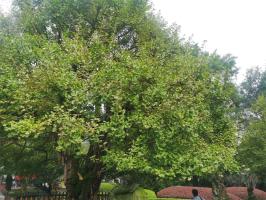Introduction: The Importance of Planting Trees
Human activities have greatly contributed to the destruction of the environment, leading to devastating consequences such as global warming, climatic changes, depletion of natural resources, and many others. The world is in dire need of effective solutions that can reverse these negative impacts and restore balance. One such solution is planting trees. Planting trees is vital to saving the planet as they help improve air quality, conserve water, mitigate climate change effects, and provide a habitat for wildlife.
Benefits of Planting Trees to the Environment
Planting trees is a sure way of protecting and preserving the environment. Trees help purify the air through photosynthesis, where they absorb carbon dioxide and release oxygen. Additionally, trees provide shade, which helps cool the environment, reducing the number of air conditioners used, which in turn reduces energy consumption. Trees also help control rainwater runoff, which reduces the risk of flooding and soil erosion. In addition, trees provide a habitat for wildlife, making it a vital element in preserving biodiversity.
Mitigating Climate Change Effects
Planting trees is a crucial strategy that can help mitigate the effects of climate change. Carbon dioxide is one of the greenhouse gases that cause global warming, and trees are known to absorb and store large amounts of carbon dioxide. According to studies, a single mature tree can absorb up to 48 pounds of carbon dioxide per year. Additionally, trees released oxygen during photosynthesis which helps in cooling the environment. By planting more trees, we can help reduce the intensity of global warming and its consequent effects. Moreover, trees also help reduce the urban heat island effect, where urban areas, which are made up of buildings, asphalt, and other materials, become much hotter than surrounding rural areas, leading to increased energy consumption, smog formation, and a general reduction in air quality.
Protecting Water Sources
Planting trees along waterways can help improve water quality, reduce soil erosion, and protect aquatic habitats. Trees tend to slow rainfall runoff while absorbing excess nutrients and pollutants in the water. This helps decrease the amount of pollution entering the water source, reducing treatment costs, and improving the health of aquatic ecosystems. In addition, trees help in groundwater recharge where they act as a natural filtration system that helps recharge groundwater reserves. This helps maintain a balance in our water systems, thus improving water quality and quantity.
Conclusion
Planting trees is one of the most effective ways of protecting the environment and reversing the negative impacts of human activities. Trees offer a host of benefits such as mitigating climate change effects, protecting water sources, preserving biodiversity, and improving air quality, among others. As individual and collective actions, we must do our part by planting more trees, supporting tree-planting initiatives, and advocating for policies that promote the protection and conservation of our natural resources. With dedicated efforts, we can make our planet greener, healthier, and sustainable.

 how many times do yo...
how many times do yo... how many planted tre...
how many planted tre... how many pine trees ...
how many pine trees ... how many pecan trees...
how many pecan trees... how many plants comp...
how many plants comp... how many plants can ...
how many plants can ... how many plants and ...
how many plants and ... how many pepper plan...
how many pepper plan...






























